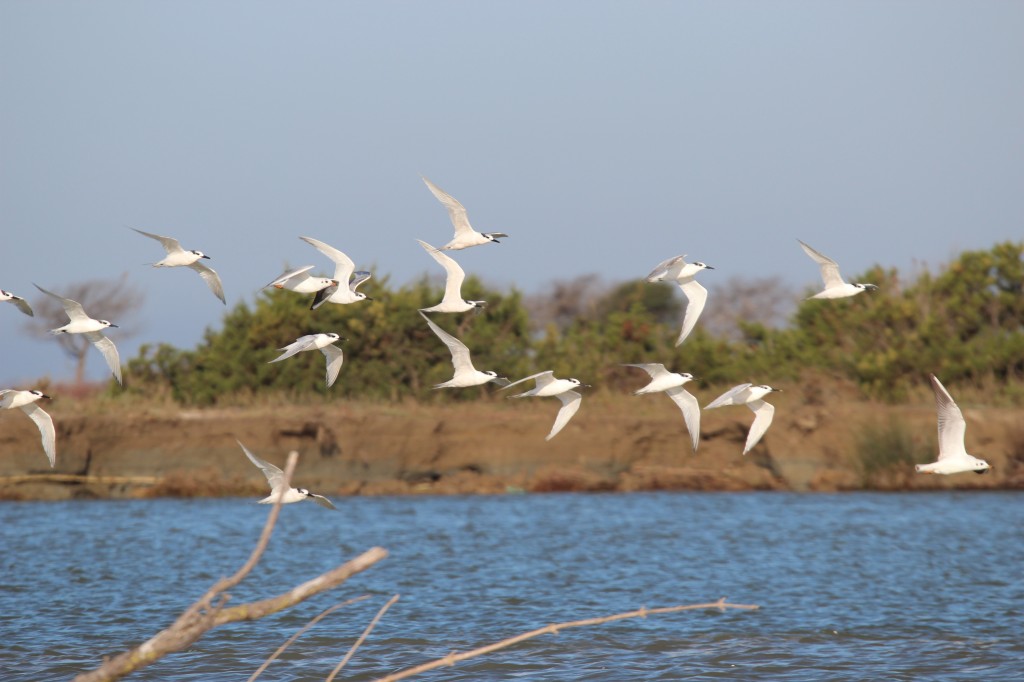India is a birder’s paradise, with 1370 species reported in the country to date as per eBird data. Indeed, the diverse array of habitats and ecosystems within the nation yield birds of all shapes and sizes. While the impressive bird diversity that can be found here is unquestionable, the types of birds in India are not immune to risks to their populations. Unfortunately, several dozen endangered birds in India are teetering on the brink of extinction.
This photo guide will go in-depth about 10 Indian endangered birds. I will describe the various perils that each species faces and talk about how they came to be endangered in the first place. Although this topic is depressing, I will try to discuss causes for optimism for each species. Let’s learn about 10 endangered birds in India!
Table of Contents
10 Endangered Birds In India
Black-bellied Tern
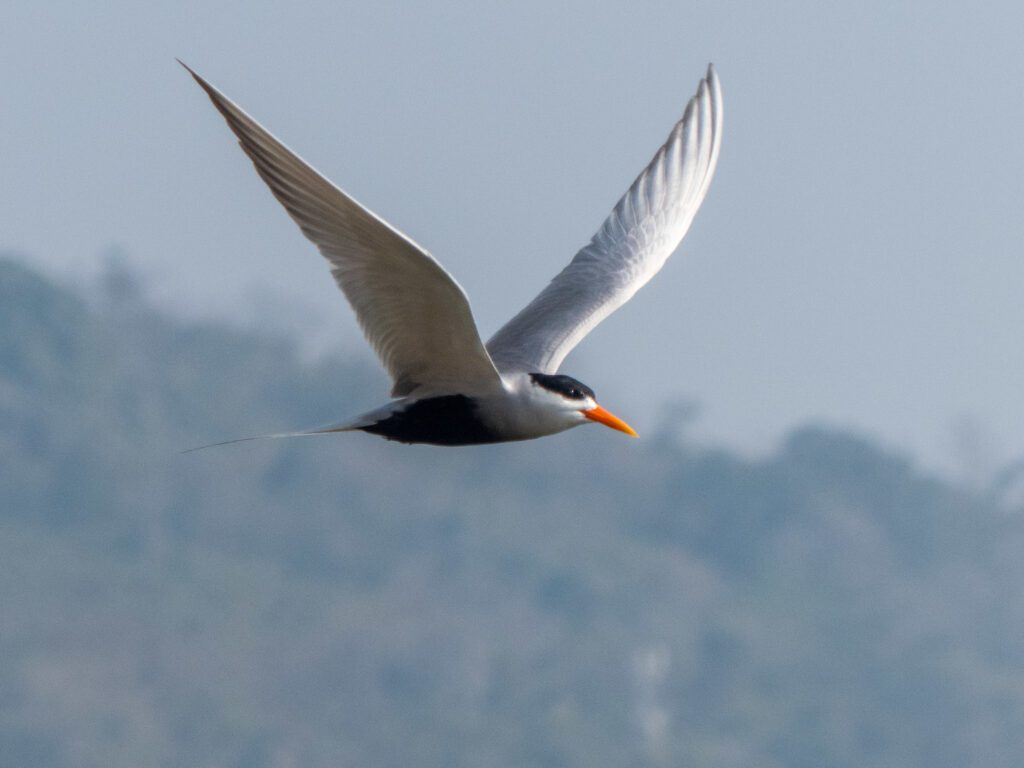
Image attribution: “Black-bellied Tern” by Mike Prince is licensed under CC BY 2.0
Black-bellied Terns are rare birds in India that are specialties in the nation, as the vast majority of the Black-bellied Tern population lives here. These handsome birds are found in freshwater ecosystems adjacent to rivers and lakes. This endangered bird in India can be found along most of the major rivers in India, but they are absent from southern and northwestern India.
These water birds in India nest from January to April. Adults and young are vulnerable during this time, as the nests are located on bare patches of ground like sandbars adjacent to rivers or lakes. Black-bellied Terns often choose to nest on islands, so this helps to alleviate pressure from some predators. Still, they are vulnerable to predation from canines like jackals and stray dogs.
The total population of these endangered birds in India is not well understood, but many estimates suggest that less than 2,000 remain. In addition to being predated, changes in water levels, persecution by humans, and loss of habitat pose a risk to this species. Unfortunately, not much research has been conducted on these birds, but many ornithologists are showing a renewed interest in studying Black-bellied Terns to prevent further population declines.
Bugun Liocichla
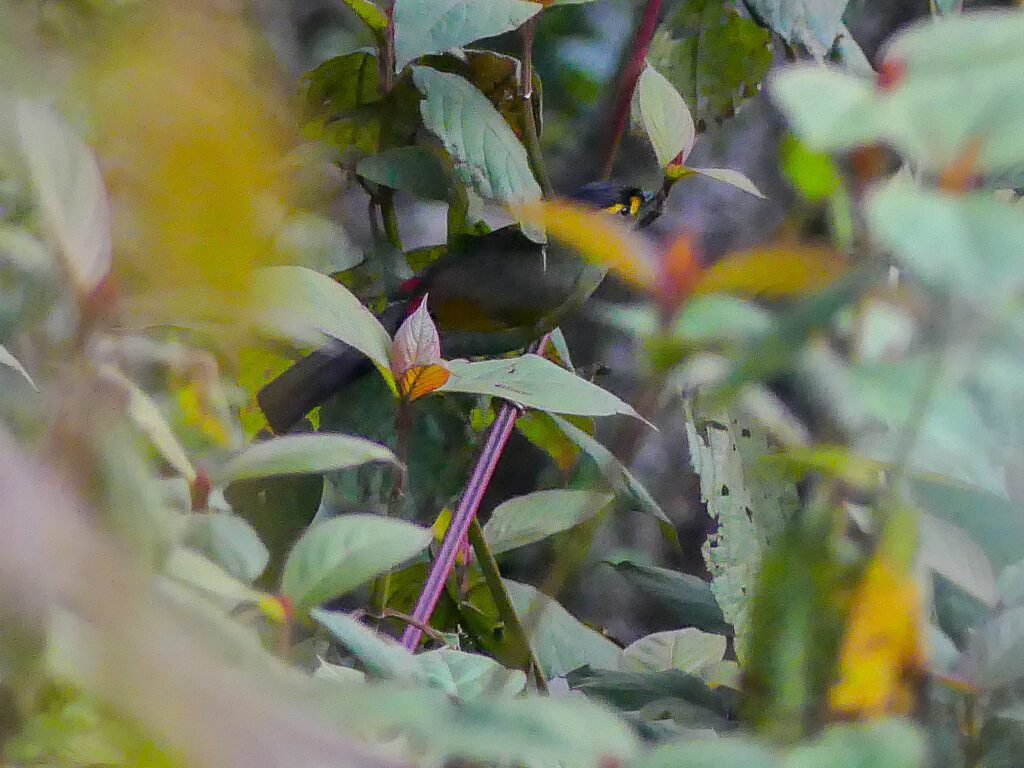
Image attribution: “Bugun Liocichla” by Mike Prince is licensed under CC BY 2.0
Bugun Liocichlas are critically endangered birds in India that are confined to an extremely small area in the Himalayan foothills. They are certainly in the top 10 endangered birds in India in terms of smallest population, as there are only estimated to be between 50 to 250 Bugun Liocichlas in existence. However, that number may be even smaller, as ornithologists have had a difficult time conducting surveys for these rare birds in India.
Although many new bird species have come to be in recent decades thanks to molecular studies that have separated species, the story of the Bugun Liocichla’s discovery is quite exciting. This species was not officially described until 2005. In fact, these small green birds in India are so unassuming that the local Bugun people did not even recognize the bird when shown photos after its official discovery.
Bugun Liocichlas have very specific habitat requirements, limiting the places in which they can thrive. They seem to be found in thick areas of vegetation at elevations between 2,060 to 2,340 meters, and they are only known from one state—West Kameng—in a very restricted area. Despite its recent introduction to science, ornithologists have been scrambling to save the Bugun Liocichla, and the local community takes pride in protecting these endangered birds in India. Getting a glimpse of this incredible creature is one of the biggest accomplishments in Indian birding, as they are the rarest bird in India.
Finn’s Weaver
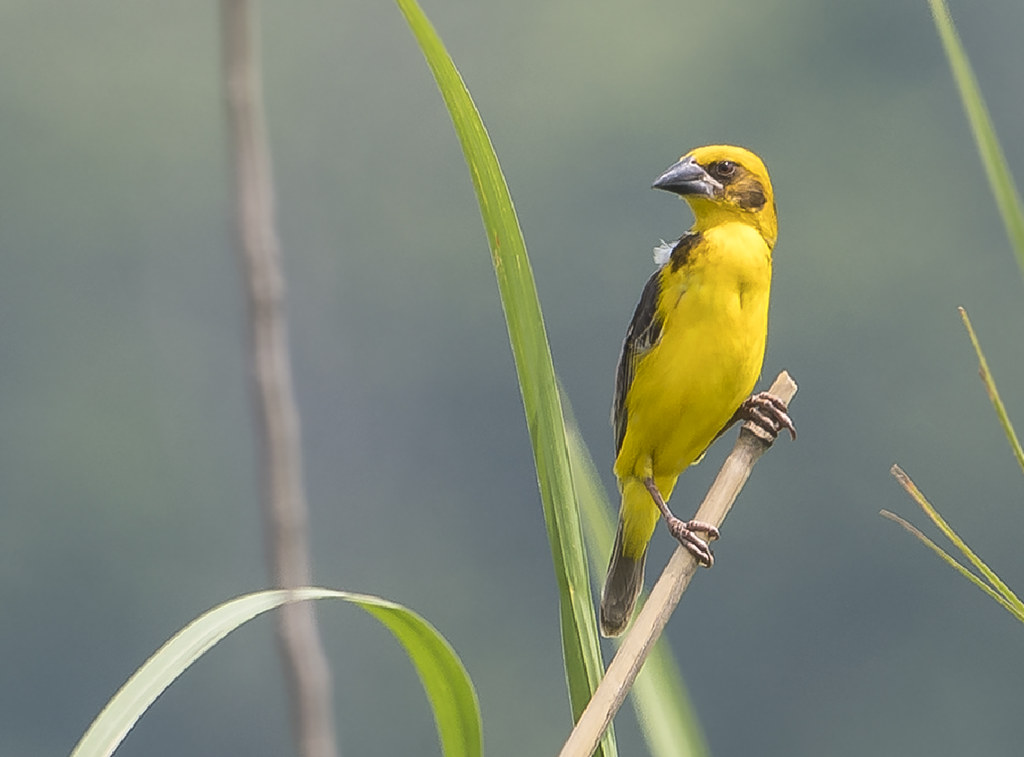
Image attribution: “Finn’s Weaver” by Koshy Koshy is licensed under CC BY 2.0
Finn’s Weavers are a small, sexually monomorphic species of weaver bird. Males are some of the most beautiful birds in India with their electric yellow plumage and dark backs. Meanwhile, females are brownish overall and quite subtle. Today, two primary Finn’s Weaver populations of this endangered bird in India remain. One population exists in Uttarakhand and Uttar Pradesh, while the other population can be found in Assam and West Bengal.
If you’re familiar with Indian geography, then you will know that the two populations of Finn’s Weavers are quite fragmented and separated from one another. This is largely due to the loss of suitable habitat between these two populations. The grasslands in which these rare bird species of India thrive have been largely destroyed and converted to agriculture. Nevertheless, Finn’s Weaver populations are hanging on in remnant chunks of grasslands. Here, there are believed to be anywhere from 2,500 to 9,999 individuals.
Finn’s Weavers are social birds, nesting in communities with other Finn’s Weavers. This makes them even more sensitive to local declines in populations, for they cannot succeed without sufficient numbers of other Finn’s Weavers in their area. A survey was conducted in Shuklaphanta National Park in Nepal to assess the numbers of these Indian endangered birds, and it found 16 active nesting colonies of Finn’s Weavers. Similar surveys will need to be completed in India for ornithologists to understand better how to save these endangered birds in India.
Great Indian Bustard
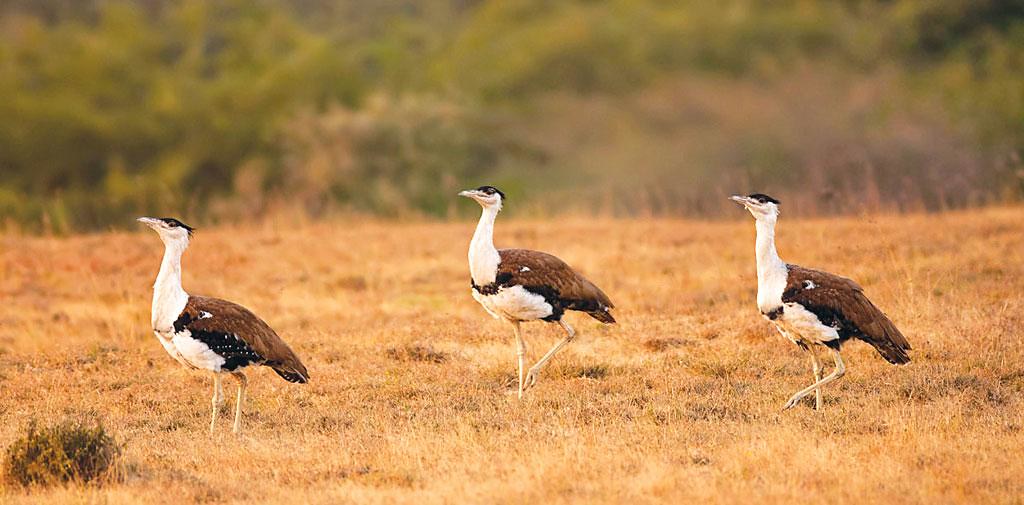
Great Indian Bustards are certainly some of the most unique birds in the world. Indeed, these massive creatures are considered to be the third-heaviest flying birds in the world, with some males topping out around 18 kilograms (40 pounds). Alas, despite once being widespread throughout India, Great Indian Bustard populations are quite fragmented.
There are only between 150-200 Great Indian Bustards alive today. Moreover, Great Indian Bustard genetic diversity is dwindling, and the population may soon be faced with a genetic bottleneck. If the numbers of this impressive bird do not start improving soon, Great Indian Bustards may soon become extinct birds in India.
The massive decline of these rare species of birds in India has been primarily driven by the loss of their grassland habitat and hunting pressures. Indeed, Great Indian Bustard populations are now fragmented in pockets of suitable habitat that are not interconnected with one another. Northwestern India seems to be where the stronghold for these endangered birds of India is, but there are also populations in western and central India. A captive breeding program initiated by conservationists has shown some promise.
Indian Skimmer
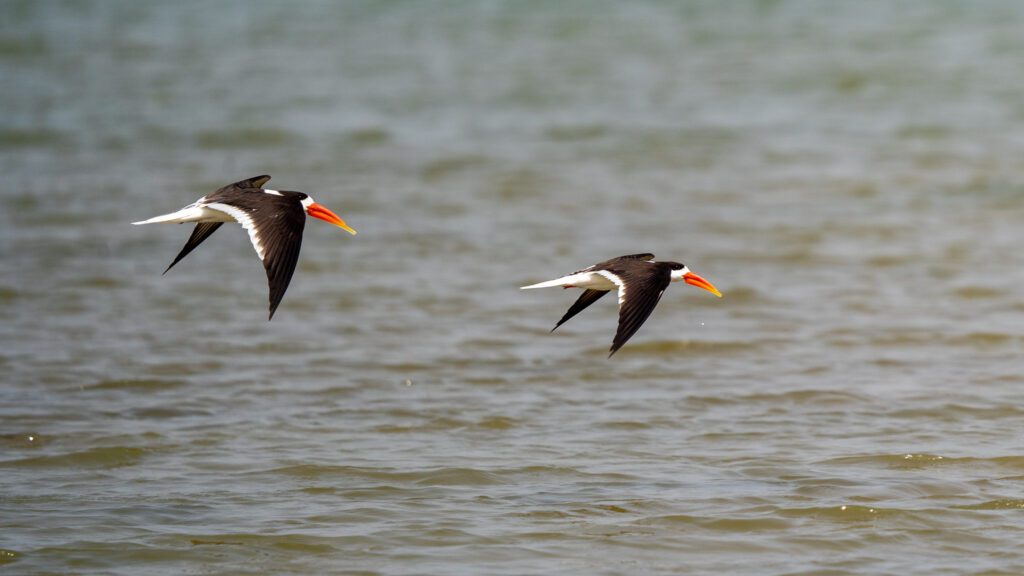
Image attribution: “Indian skimmers over Chambal” by Kandukuru Nagarjun is licensed under CC BY 2.0
Indian Skimmers are similar to Black-bellied Terns in their habitat preferences, being found in freshwater ecosystems and breeding along sizable rivers. Like Black-bellied Terns, Indian Skimmers place their nests on the ground. However, Indian Skimmers tend to nest communally whereas Black-bellied Terns may not nest in such arrangements.
Considering that Indian Skimmers frequent the same habitats as Black-bellied Terns, this means that they face many of the same perils as them. Therefore, predation, changes in water level, and disturbance by humans lead to declines in Indian Skimmer populations. Luckily, these rare birds in India are doing comparatively better than the other endangered birds in India on this list, as their population is estimated to number between 4,000 to 6,700.
These long beak birds in India would benefit from habitat preservation and the reduction of fishing around their breeding habitats. Indian Skimmers arrive at their breeding habitats around January or February, and they usually remain through much of May. Several studies have sought to examine the breeding success of Indian Skimmers, and there seems to be a decent amount of information available about these birds.
Indian Vulture
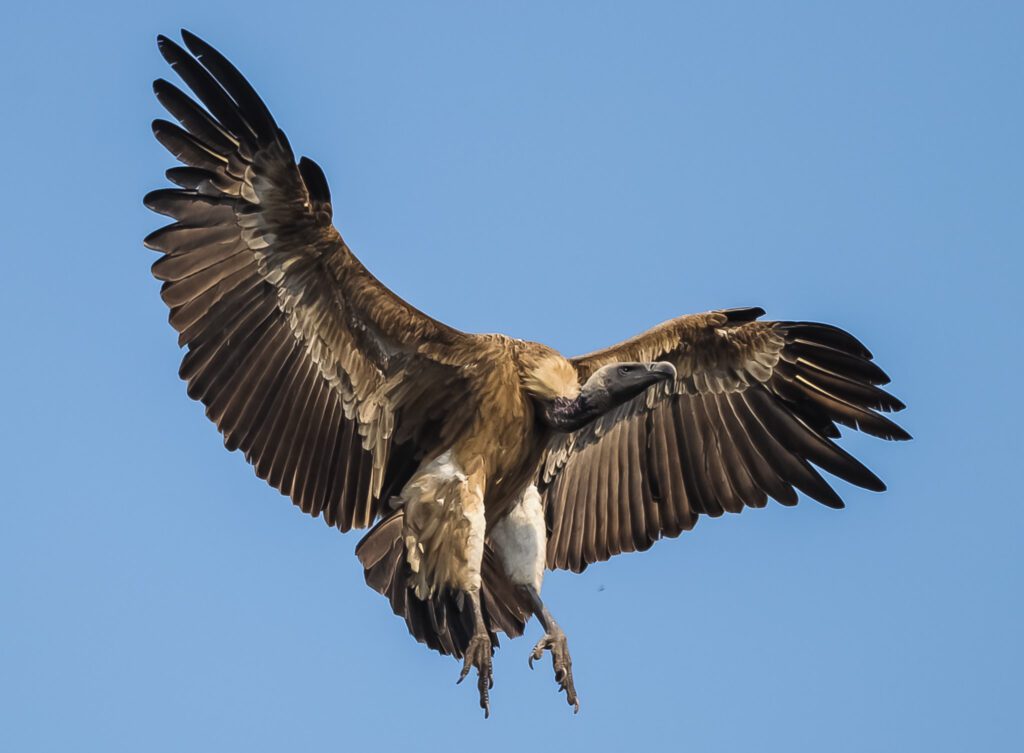
The plight of Indian Vultures and other vultures in India has been well-documented, and it is now understood that a drug known as Diclofenac was killing off vultures by causing kidney failure. The situation was similar to what happened worldwide in the 1970s when DDT (link) was responsible for killing millions of birds of prey. Fortunately, it seems that a crisis has again been averted, and conservationists believe that Indian Vultures will recover.
Alas, it may take a while for vultures in India to recover, as these birds live long lives and produce only a chick or two annually. In the case of the Indian Vulture, there are thought to be between 5,000 to 15,000 of these Indian endangered birds in existence today, and their numbers are thought to be increasing.
The strongholds of Indian Vultures are located in north-central India, northwestern India, and Maharashtra. Pairs breed on cliffs adjacent to open areas, and these endangered birds in India may be observed soaring high in the air as they look for carrion to eat.
Nilgiri Laughingthrush
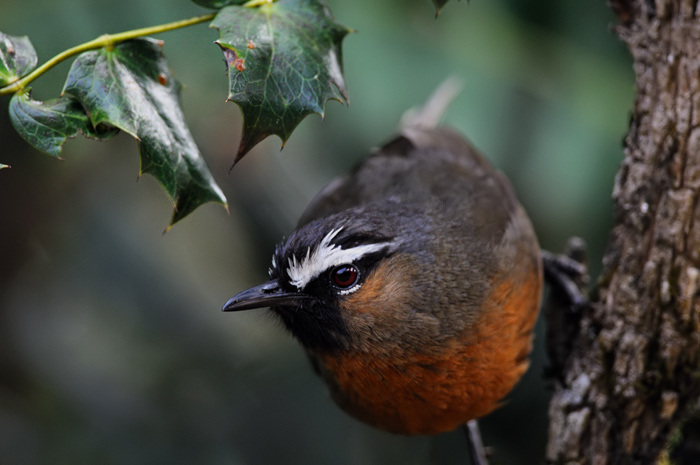
Image attribution: “nilgiri laughingthrush” by shrikant rao is licensed under CC BY 2.0
Nilgiri Laughingthrushes are a rare bird species of India with a very restricted range within the Western Ghats. Specifically, these birds occur in the Nilgiri Hills – a habitat that is extraordinarily diverse but has rapidly changed in the past two centuries. What was once a vast system of sholas–stunted forests connected by grasslands–has been reduced and fragmented to 7% of its former cover.
The alterations made to the habitats within the Nilgiri Hills are responsible for landing the Nilgiri Laughingthrush on the endangered species list. Ornithologists don’t have good estimates as to the total population of this species, but—considering the small range of this species—it is reasonable to believe that populations are imperiled and at risk of extinction.
Nilgiri Laughingthrushes are found in only two Indian states – Tamil Nadu and Kerala. Although they seem to be reasonably common in some parts of their small range, conservationists must keep in mind that any natural disaster or other major disturbance to the Nilgiri Hills could mean disaster for these endangered birds of India.
Nilgiri Sholakili
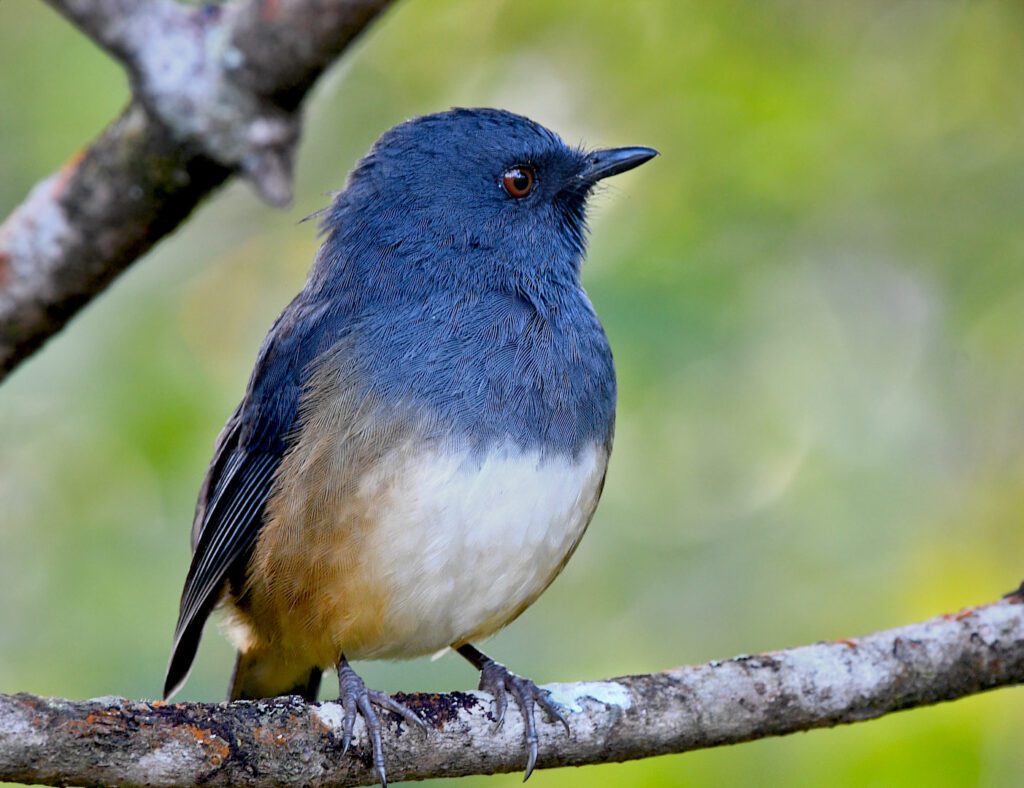
Image attribution: “nilgiri sholakili” by Shrikant Rao is licensed under CC BY 2.0
Like the Nilgiri Laughingthrush, the Nilgiri Sholakili is restricted to the Nilgiri Hills in western India. However, these birds have a range that is slightly larger than that of the Nilgiri Laughingthrush, being found in Karnataka in addition to Kerala and Tamil Nadu.
Ornithologists still have much to learn about these endangered birds in India, as there are no good population estimates. However, considering its small range, it is safe to say that this species deserves its endangered species status.
A big reason why Nilgiri Sholakilis are not well studied has to do with their retiring habitats. Yes, these small birds keep a low profile in their forested homes, often foraging along the ground in dense thickets of forest. Nilgiri Sholakilis are found in sholas just like their laughingthrush counterparts. Loss of habitat is thought to be the main threat to the population of this species.
Red-headed Vulture
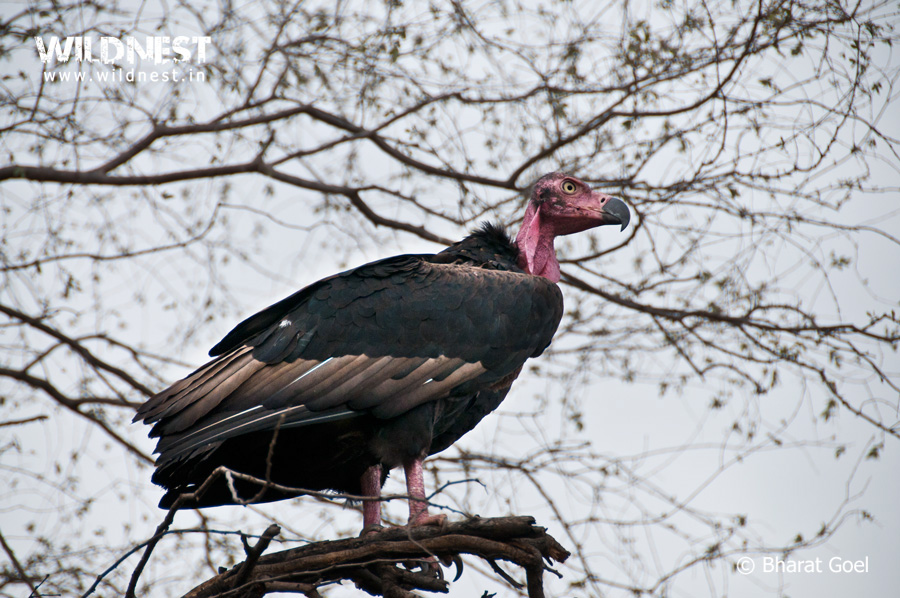
Image attribution: “red-headed-vulture-ranthambore” by Wildnest Travel & Photography is licensed under CC BY 2.0
The population outlook for the Red-headed Vulture is more bleak compared to that of the Indian Vulture, as conservationists speculate that between 2,500 – 9,999 adults remain. Although drugs like Diclofenac are banned in India, these rare birds in India still face persecution from hunters and may succumb to other drugs being used in the environment.
Red-headed Vulture populations have a long way to recovery in India, as it may take decades for these scavenger birds to reproduce to levels where meaningful growth is occurring in the population. Human persecution is now thought to be the main threat to these critically endangered birds in India.
Although they may look dangerous, Red-headed Vultures are harmless to humans. In fact, vultures such as this species provide many great services to people in India. For instance, by consuming carcasses of dead animals, vultures are stopping the spread of diseases and halting the increase in other scavengers like feral dogs.
White-rumped Vulture
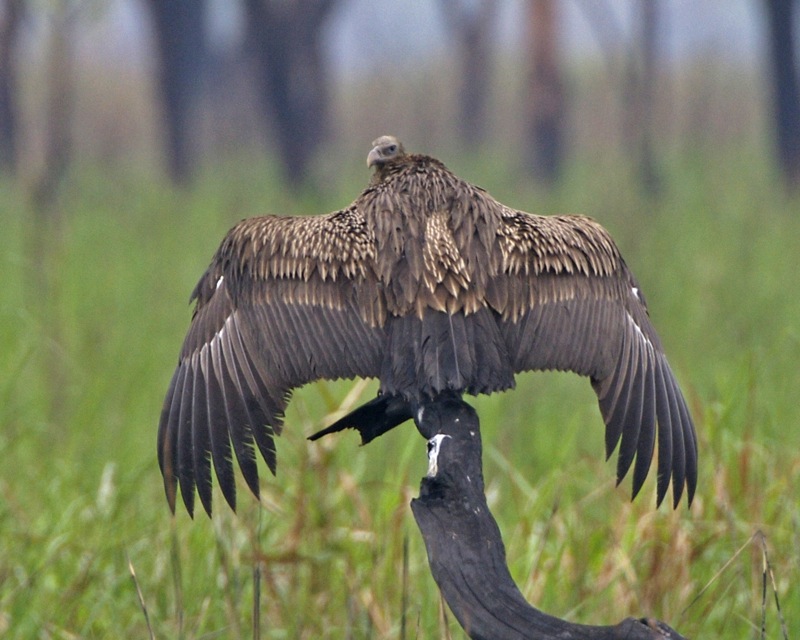
Image attribution: “White-rumped Vulture (Gyps bengalensis) – juvenile” by Lip Kee is licensed under CC BY-SA 2.0
White-rumped Vultures are another critically endangered species whose numbers have been decimated in the last half-century. Today, it is estimated that there are between 4,000 – 6,000 White-rumped Vultures remaining.
While the outlook for this species may look dire, it seems that the drastic population declines have halted for now. Therefore, conservationists can focus on bolstering the populations of these vultures in India. Several innovative strategies have been put into practice to do this. Namely, chicks are being raised in captivity to mitigate depredation during the egg phase. Moreover, vulture buffets are being offered so these creatures have a safe, plentiful food source.
White-rumped Vultures can be observed throughout much of India, but they still are not common anywhere within the country. With luck, the population of this species will slowly rise in the next few decades and lead to an increased presence of these beneficial birds.
How To Save Endangered Birds In India
Now that you’ve read this list of endangered birds in India, you may be interested in knowing how to save endangered birds in India. Fortunately, no matter where you live, you can make a difference by donating to organizations that support populations of endangered Indian birds. Here are a few reputable conservation organizations that specifically help some of the birds on this list:

